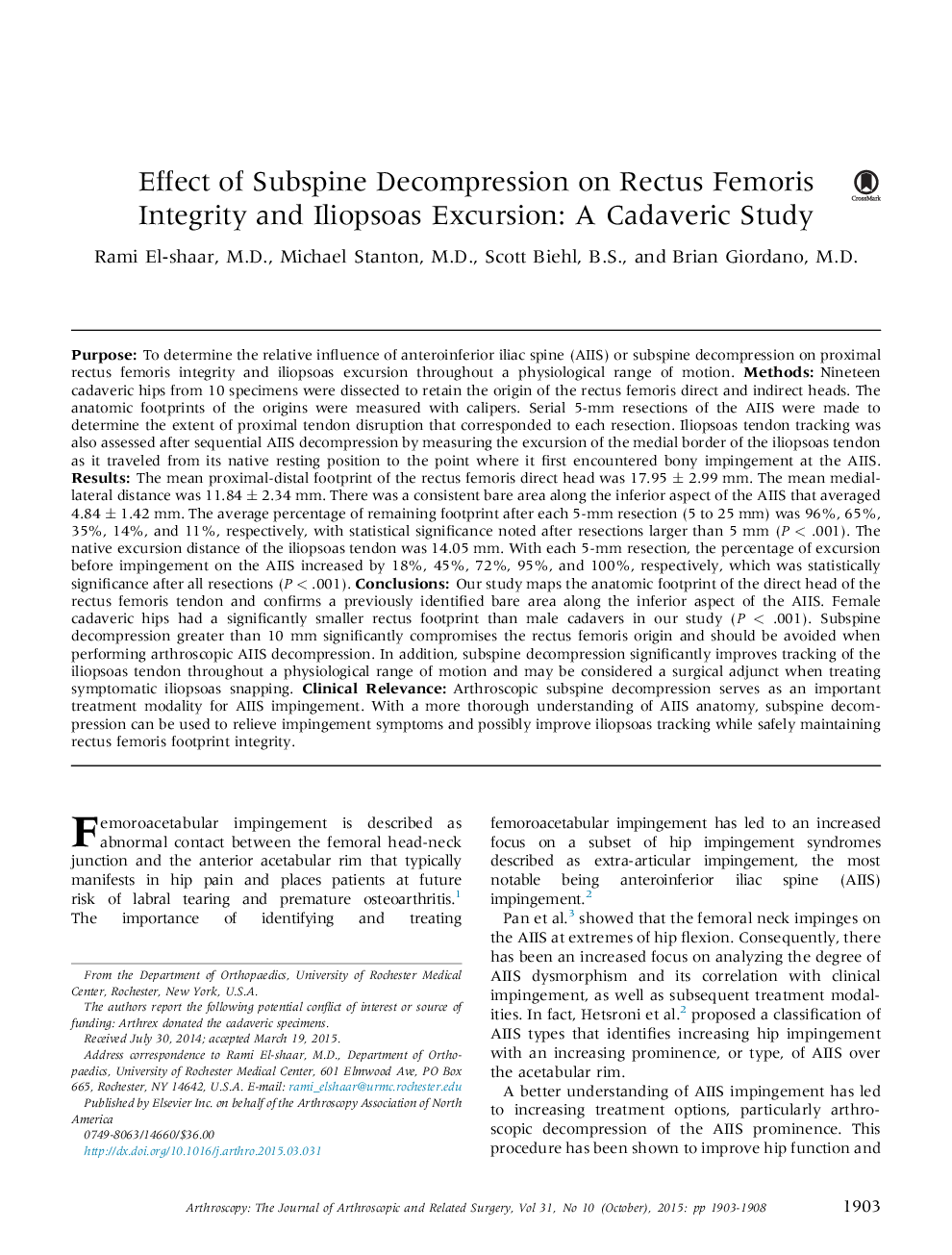| کد مقاله | کد نشریه | سال انتشار | مقاله انگلیسی | نسخه تمام متن |
|---|---|---|---|---|
| 4042506 | 1603478 | 2015 | 6 صفحه PDF | دانلود رایگان |
PurposeTo determine the relative influence of anteroinferior iliac spine (AIIS) or subspine decompression on proximal rectus femoris integrity and iliopsoas excursion throughout a physiological range of motion.MethodsNineteen cadaveric hips from 10 specimens were dissected to retain the origin of the rectus femoris direct and indirect heads. The anatomic footprints of the origins were measured with calipers. Serial 5-mm resections of the AIIS were made to determine the extent of proximal tendon disruption that corresponded to each resection. Iliopsoas tendon tracking was also assessed after sequential AIIS decompression by measuring the excursion of the medial border of the iliopsoas tendon as it traveled from its native resting position to the point where it first encountered bony impingement at the AIIS.ResultsThe mean proximal-distal footprint of the rectus femoris direct head was 17.95 ± 2.99 mm. The mean medial-lateral distance was 11.84 ± 2.34 mm. There was a consistent bare area along the inferior aspect of the AIIS that averaged 4.84 ± 1.42 mm. The average percentage of remaining footprint after each 5-mm resection (5 to 25 mm) was 96%, 65%, 35%, 14%, and 11%, respectively, with statistical significance noted after resections larger than 5 mm (P < .001). The native excursion distance of the iliopsoas tendon was 14.05 mm. With each 5-mm resection, the percentage of excursion before impingement on the AIIS increased by 18%, 45%, 72%, 95%, and 100%, respectively, which was statistically significance after all resections (P < .001).ConclusionsOur study maps the anatomic footprint of the direct head of the rectus femoris tendon and confirms a previously identified bare area along the inferior aspect of the AIIS. Female cadaveric hips had a significantly smaller rectus footprint than male cadavers in our study (P < .001). Subspine decompression greater than 10 mm significantly compromises the rectus femoris origin and should be avoided when performing arthroscopic AIIS decompression. In addition, subspine decompression significantly improves tracking of the iliopsoas tendon throughout a physiological range of motion and may be considered a surgical adjunct when treating symptomatic iliopsoas snapping.Clinical RelevanceArthroscopic subspine decompression serves as an important treatment modality for AIIS impingement. With a more thorough understanding of AIIS anatomy, subspine decompression can be used to relieve impingement symptoms and possibly improve iliopsoas tracking while safely maintaining rectus femoris footprint integrity.
Journal: Arthroscopy: The Journal of Arthroscopic & Related Surgery - Volume 31, Issue 10, October 2015, Pages 1903–1908
